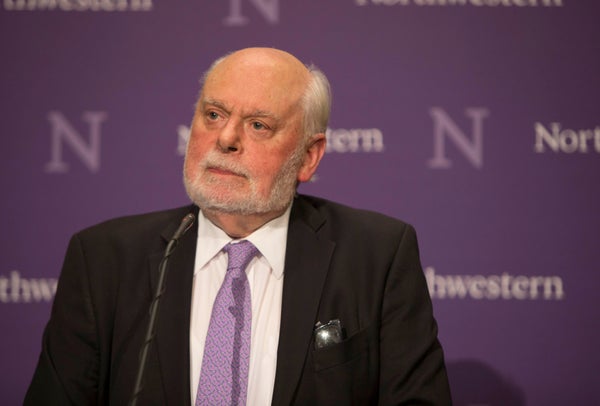This article was published in Scientific American’s former blog network and reflects the views of the author, not necessarily those of Scientific American
Last week the Nobel committee selected 2016’s laureates, spotlighting the biggest advances in chemistry, physics and medicine. This year’s honorees snagged prizes for understanding exotic states of matter, tiny machines and cells that eat themselves. If you missed any of the news, here’s a quick list of who won, what they did, and how humanity may benefit.
When things get cold, they get weird. Understanding that weirdness earned David J. Thouless, F. Duncan M. Haldane and John M. Kosterlitz this year’s Nobel Prize in Physics. The scientists work with the mathematical field of topology to study physical properties that remain constant despite changes in size or shape. Nobel committee member Thors Hans Hansson explained the dense concept using some dense bread: a cinnamon bun, a bagel and a pretzel—containing zero, one and two holes, respectively.
The increasing number of holes, from zero to one to two, is a metaphor for changing phases in ultra-cold, two-dimensional materials and could help explain the exotic properties of such materials. Topology helped scientists better understand superconductors (through which current can move without resistance) and superfluids (fluids that flow without friction)—materials that could have applications in quantum computing and other electronics. (Need a good topology joke? We've got you covered with this video.)
On supporting science journalism
If you're enjoying this article, consider supporting our award-winning journalism by subscribing. By purchasing a subscription you are helping to ensure the future of impactful stories about the discoveries and ideas shaping our world today.
The Nobel Prize in Chemistry went to Jean-Pierre Sauvage, James Fraser Stoddart and Bernard Feringa for their work on molecular machines. As chemist Christian Schafmeister described in our pages, human proteins already act like little machines with jobs such as contracting our muscles or doing the heavy lifting inside our cells. This year's winners synthesized molecules a billionth of a meter in length that acted as rotors, elevators and even tiny cars. The field is still in its infancy; scientists continue to research how to build these minuscule devices. We might one day see molecular machinery applications in medicine or even cellular computers.
Japan’s Yoshinori Ohsumi took the Nobel Prize in Medicine for broadening understanding of how cells eat their own parts, a process called autophagy. Listen to Juleen Zierath, chair of the Nobel Committee for Physiology or Medicine, explain the research, here. In-cell cleaning equipment could be important for maintenance, like cleaning the gunk out of the cytoplasm and refurbishing neurons. Ohsumi focused on the process in yeast, the single-celled organisms responsible for fluffing bread and spiking wine, and dug into a process scientists thought was important only under special circumstances. But Ohsumi’s work sparked a wave of interest and has shown that autophagy plays an important role in neurodegenerative diseases including Alzheimer’s and Parkinson’s.
Onward to next year—and hopefully we’ll see more female laureates soon.
